Tech
Will Gamble Architects gives London house “soft minimalism” interiors
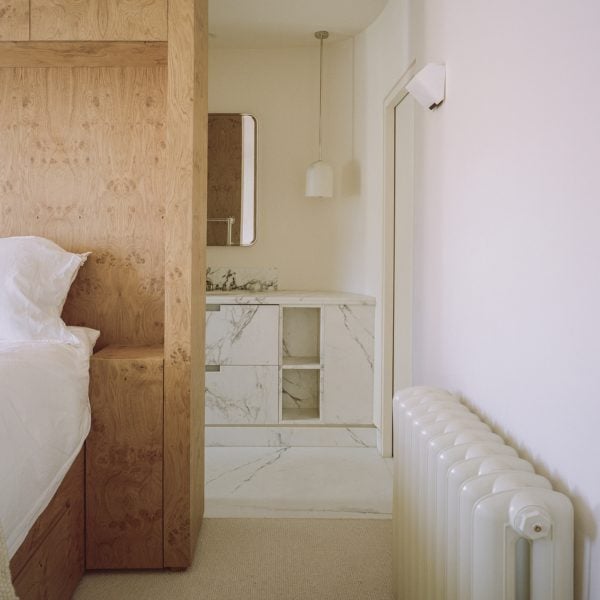
UK studio Will Gamble Architects has extended and modernised a Victorian house in south London, using curved shapes and a palette of natural materials to create a calm and minimalist aesthetic.
The clients – a married couple looking to create their forever home – asked Will Gamble Architects to oversee the transformation of the semi-detached house in Putney into a serene sanctuary.
Architecture firm Proctor & Shaw initially developed the planning drawings before Gamble’s studio was appointed to develop a cohesive interior design service throughout the home, including technical drawings and revised spatial layouts for the upper floors.
To fufil the clients’ request for increased space, a rear and attic extension was added.
“We were keen to maximise space and light as much as possible through clever design solutions,” architect Will Gamble told Dezeen.
“This was particularly relevant over the upper floors where the brief called for four bedrooms and three bathrooms which a conventional layout couldn’t accommodate.”
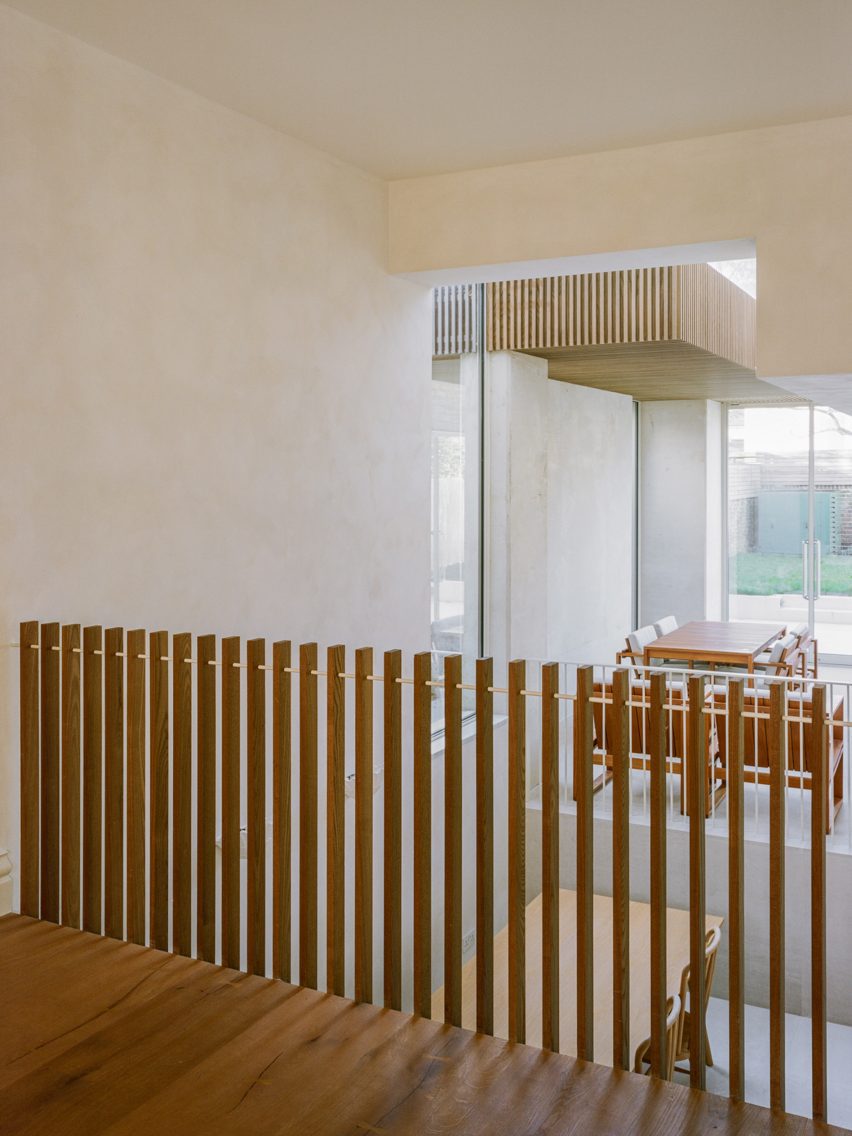
Gamble applied an approach he described as “soft minimalism” throughout the interiors, utilising a restrained palette of textural materials to ensure consistency across all floors.
“Soft minimalism is defined by curved lines, gentle tonal hues, natural materials and carefully curated spaces,” said the architect. “This aesthetic allowed us to deliver a highly bespoke project tailored to our clients’ needs.”
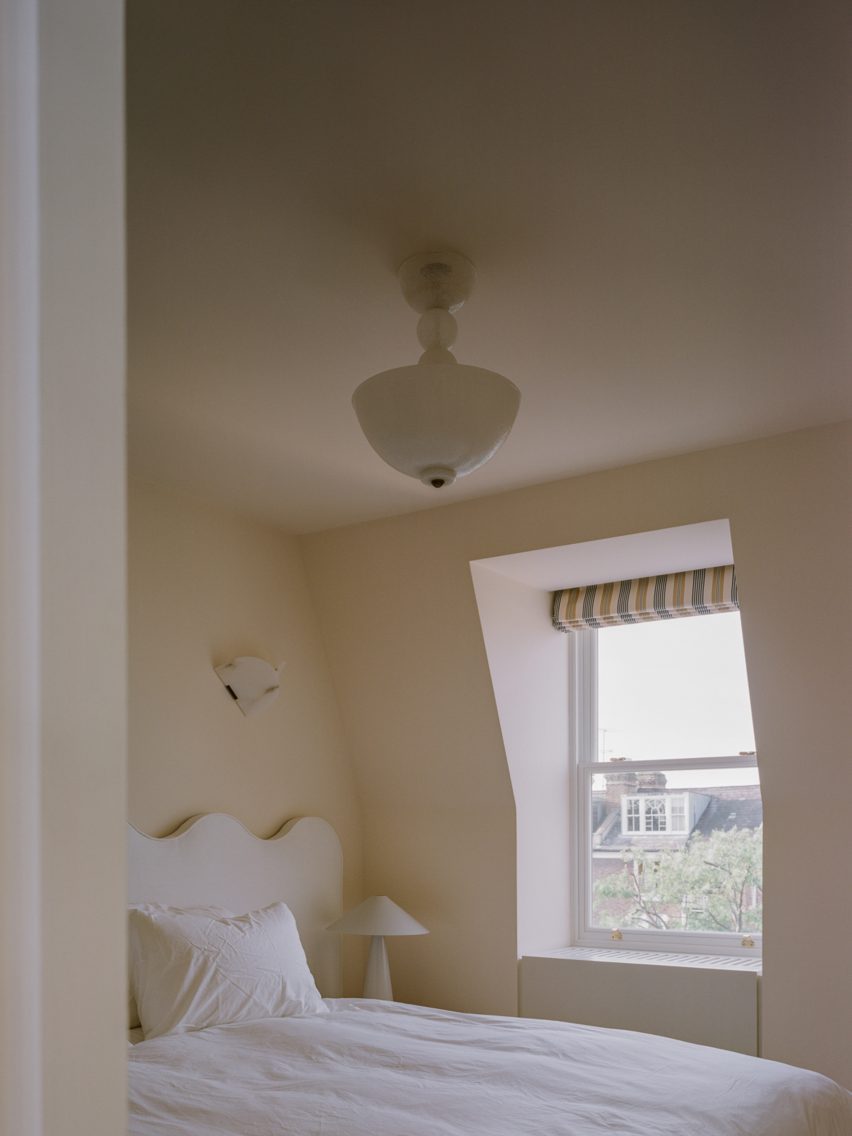
Arched niches, curved walls and a bespoke staircase with semi-circular landings, circular spindles and a turned-oak rail contribute to an aesthetic defined by a gentle geometry.
Muted colours including warm whites and soft pinks provide a soft and coherent backdrop, while more textured materials including pippy oak and richly veined marble add personality to some of the spaces.
The new staircase was illuminated by an oval roof light that continues the theme of gentle, round forms. The roof light casts natural light deep into the floor plan and is openable to allow stack ventilation to naturally cool the interior.
Bespoke joinery brings functionality and visual interest to rooms including the main bedroom, where a headboard unit made from pippy oak provides additional storage as well as concealing the en-suite shower room.
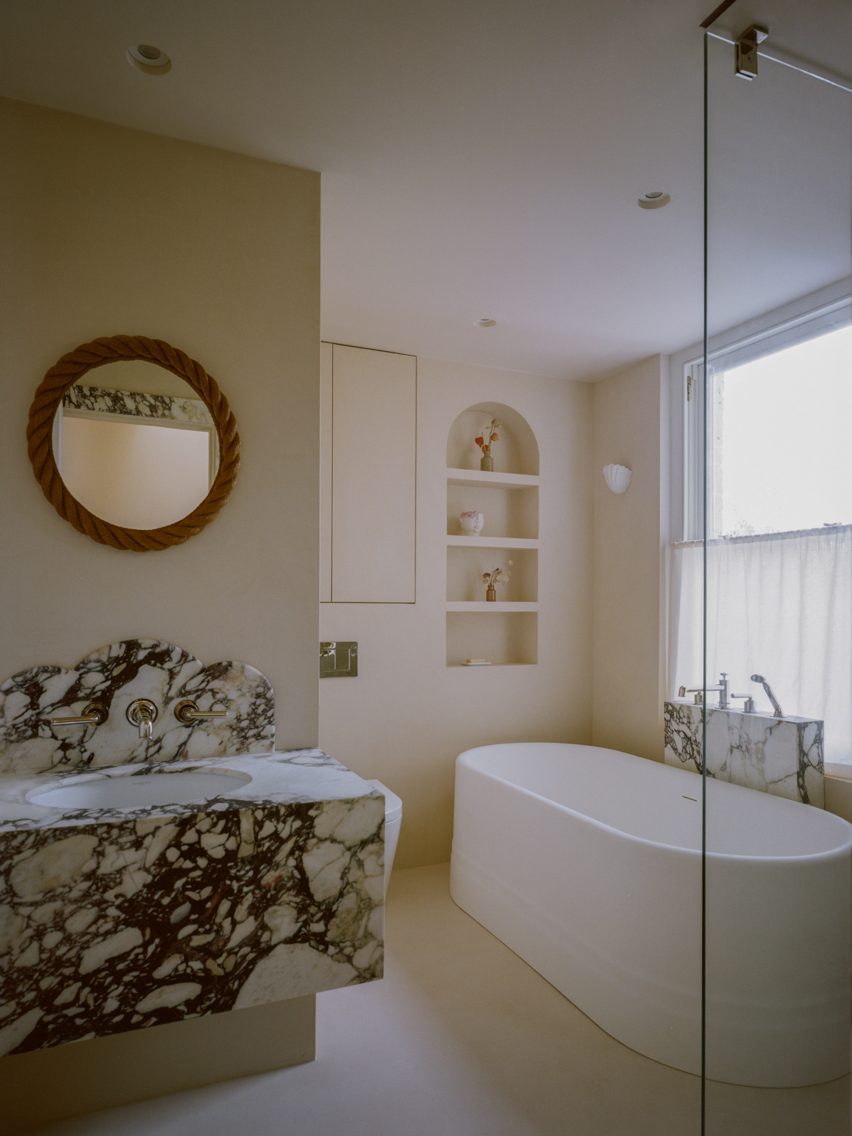
The bespoke bed and headboard with integrated wardrobes are centrally located within the room to maximise the available space. The en suite contains a pair of marble-clad vanities either side of a walk-in shower.
Pippy oak was used elsewhere in the house for furniture including bedside tables and built-in storage. The wood’s distinctive knots and knot clusters stand out whilst complementing the other natural materials.
“The ‘cats paw’ pattern of the pippy oak adds a decadence to the otherwise muted material palette,” Gamble added. “We used this unique material in key areas to help establish a hierarchy across the spaces throughout the project.”
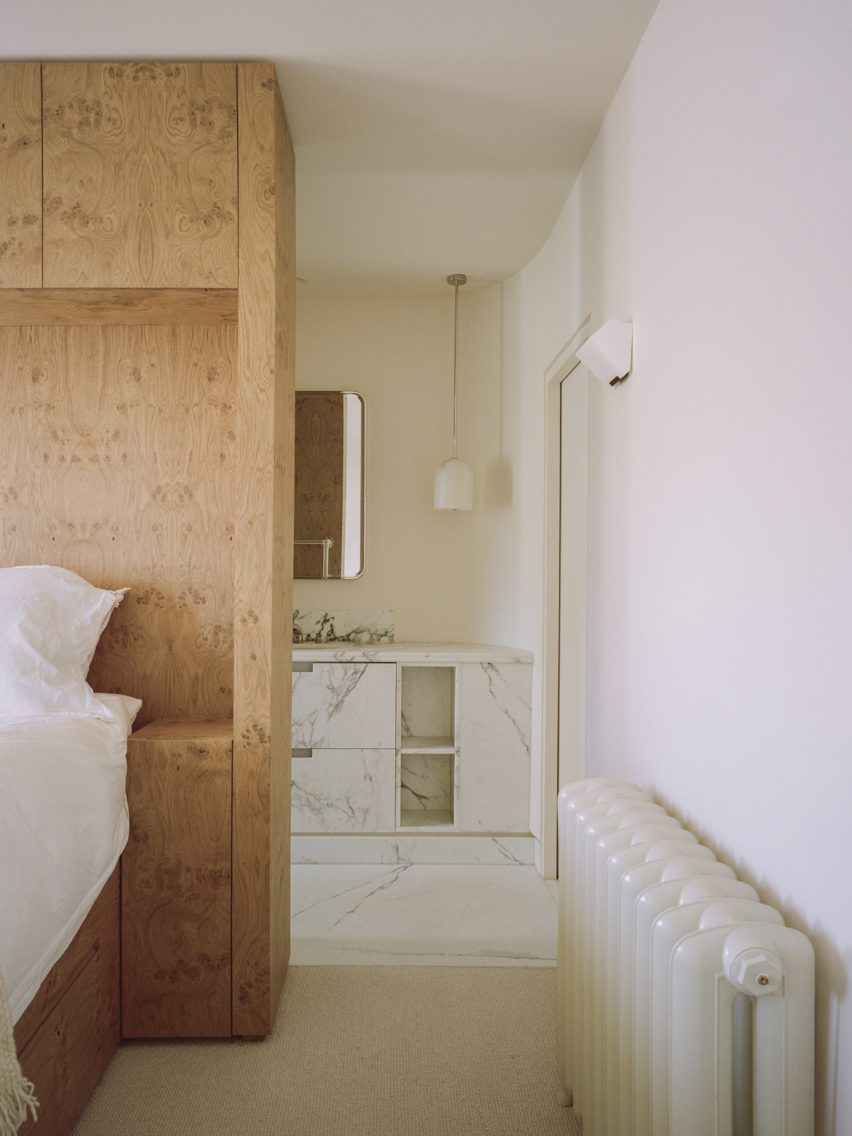
As part of the renovation project, the building’s historic fabric was thermally upgraded to reduce energy consumption and create a more comfortable environment. A home automation system was also incorporated that minimises visible light switches and contributes to the uncluttered, minimalist interiors.
According to Gamble, the owners were interested in “achieving a high-quality finish driven by an acute attention to detail”, which led to a highly bespoke project tailored to their exact requirements.
Will Gamble established his London-based studio in 2018 after working for architectural practices Farrells and Francis Philips Architects. The office specialises in sensitively retrofitting existing buildings through contemporary architectural interventions.
The studio’s previous projects include a home built within the ruins of a 17-century parchment factory in Northamptonshire and a glass-walled extension to a Georgian house in Leicestershire.










